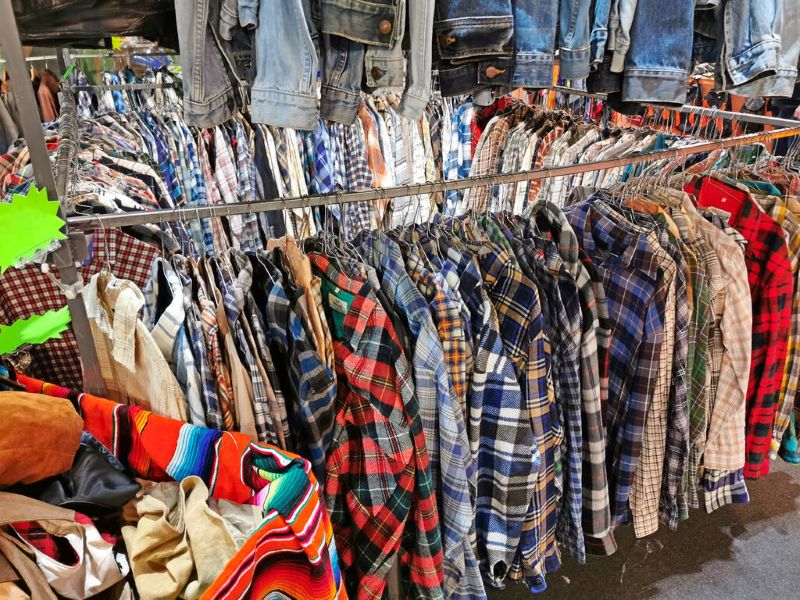4 min read
733 words
Are you looking to save money on your fashion purchases while also being more sustainable? Second-hand shopping might just be the answer for you! The trend of buying pre-owned clothing and accessories is gaining popularity, with more and more people realizing the benefits of shopping second-hand. In this article, we will explore why second-hand shopping is having a major moment and how you can make the most of this trend.
The Eco-Conscious Appeal: A Sustainable Revolution
One of the most powerful drivers behind the second-hand boom is the escalating awareness of environmental sustainability. The traditional linear model of consumption—”take, make, dispose”—is proving increasingly unsustainable, particularly in industries like fast fashion, which generate enormous amounts of waste and pollution. Consumers, especially younger generations, are actively seeking ways to reduce their environmental footprint, and second-hand shopping offers a tangible, immediate solution.
By choosing pre-owned items, shoppers directly contribute to a circular economy. This means extending the lifespan of products, diverting textiles, furniture, electronics, and other goods from landfills, and reducing the demand for new production. The environmental benefits are substantial: it conserves raw materials, saves energy, lowers carbon emissions associated with manufacturing and transport, and minimizes pollution. For many, integrating second-hand purchases into their lifestyle is a deliberate ethical choice, a statement against disposable culture, and a commitment to a more responsible mode of consumption. This desire to “shop consciously” has moved sustainability from a fringe concern to a central tenet of modern purchasing decisions, making second-hand not just an option, but often the preferred choice.
Unearthing Unique Treasures & Unbeatable Value
Beyond its environmental merits, second-hand shopping appeals profoundly to a desire for individuality and authenticity. In a world saturated with mass-produced goods, pre-loved items offer a refreshing antidote. Vintage clothing, antique furniture, or obscure books often carry a unique charm, a story, and a distinct aesthetic that cannot be replicated by new items. Shoppers can unearth truly one-of-a-kind pieces that reflect their personal style, standing out from the crowd rather than conforming to fleeting trends dictated by mainstream retail.
Furthermore, the economic benefits remain a significant draw. In an era of rising living costs, second-hand goods often provide exceptional value for money. High-quality items, sometimes from premium brands, can be acquired at a fraction of their original price, making luxury more accessible and allowing shoppers to stretch their budgets further. This doesn’t just apply to fashion; it extends to furniture, electronics, books, and even collectibles, where patience and perseverance can yield incredible bargains. The thrill of the “treasure hunt”—discovering a hidden gem at an unexpected price—adds an element of excitement and satisfaction that traditional retail often lacks, transforming shopping into an adventure rather than a mere transaction.
The Digital Revolution & Mainstream Accessibility

While brick-and-mortar thrift stores and charity shops have long been staples, the digital age has catapulted second-hand shopping into unprecedented accessibility and visibility. Online marketplaces and apps have revolutionized how people buy and sell pre-owned goods, breaking down geographical barriers and expanding networks exponentially. Platforms like eBay, Depop, Vinted, ThredUp, Poshmark, and Facebook Marketplace have made it easier than ever to browse, discover, and purchase items from anywhere in the world.
These digital platforms offer curated collections, detailed product descriptions, user reviews, and secure payment systems, effectively professionalizing the second-hand market. Social media, particularly Instagram and TikTok, has also played a crucial role, allowing influencers and everyday users to showcase their second-hand finds, share styling tips, and popularize the concept of sustainable fashion and living. Hashtags like #thriftstorefinds, #secondhandstyle, and #sustainablefashion have garnered millions of views, turning what was once considered “second-best” into a desirable and often aspirational lifestyle choice. The integration of technology has not only made second-hand shopping more convenient but has also shed its old stigmas, presenting it as a smart, stylish, and socially responsible way to consume.
In conclusion, the major moment second-hand shopping is experiencing is multifaceted, driven by a powerful confluence of environmental consciousness, the quest for individuality and value, and the transformative power of digital innovation. What began as a practical necessity for some has evolved into a conscious choice for many, reshaping consumer behaviour and challenging the conventions of traditional retail. As awareness continues to grow and platforms become even more sophisticated, the market for pre-loved goods is poised not just to sustain its current momentum but to become an even more dominant force in the global economy.
